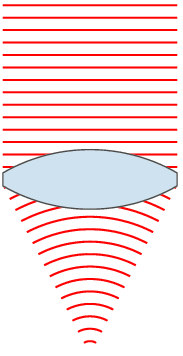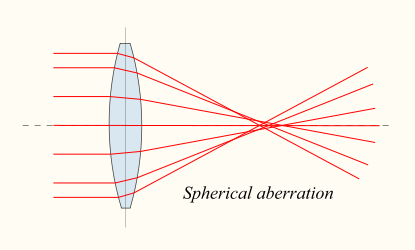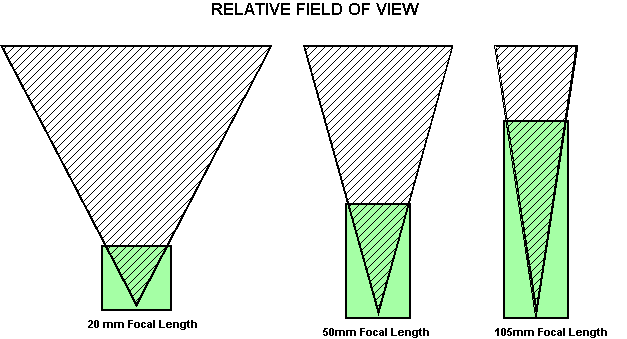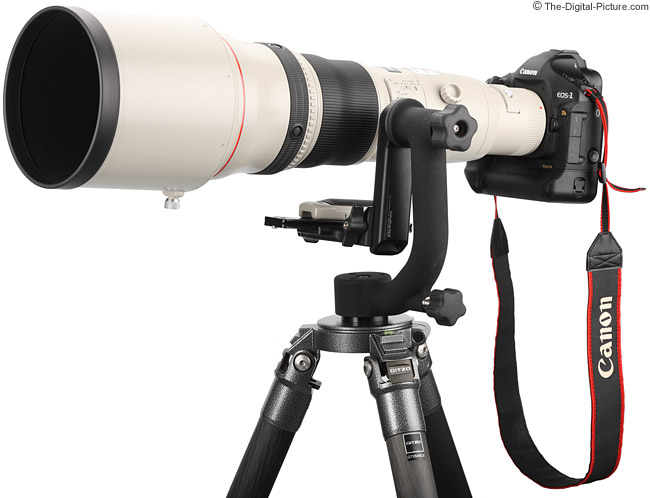
Lenses
A lens is an optical device with perfect or approximate axial symmetry which transmits and refracts light, concentrating or diverging the beam. A simple lens is a lens consisting of a single optical element.

A compound lens is an array of simple lenses (elements) with a common axis; the use of multiple elements allows more optical aberrations to be corrected than is possible with a single element. Manufactured lenses are typically made of glass or transparent plastic.
http://en.wikipedia.org/wiki/Photographic_lens

There is no major difference in principle between a lens used for a camera, a telescope, a microscope, or other apparatus, but the detailed design and construction are different.
A lens may be permanently fixed to a camera, or it may be interchangeable with
lenses of different focal lengths, apertures, and other properties.
The two main optical parameters of a photographic lens are the maximum aperture and the focal length.
The focal length determines the angle of view, and the size of the image relative to that of the object, while the maximum aperture limits the brightness of the image and the fastest shutter speed usable. A popular third consideration is the shortest focal distance.
The angle of view is the area of the image captured by the image sensor, expressed as an angle. The larger the angle of view, the shorter the focal length. The smaller the angle of view, the longer the focal length. A lens with a short focal length and a large angle of view is called a wide-angle lens. A lens with a long focal length and a small angle of view is called a telephoto lens.
The maximum usable aperture of a lens is usually specified as the focal ratio or
f-number, which is equal to the focal length divided by the effective aperture
(or entrance pupil) diameter in the same units.
The lower the number, the more light per unit area is delivered to the focal plane.
Larger apertures (smaller f-numbers) provide a much
shallower depth of field than smaller apertures, other conditions being equal.
Focal lengths are usually specified in millimeters (mm)
What's the F-number?
Lens brightness is determined by the focal length and effective lens diameter. If you divide the focal length by the effective lens diameter, you get a value called the F-number. The smaller the F-number, the brighter the lens (the larger the aperture). A bright lens has several key advantages. For example, a brighter lens lets you use a faster shutter speed, so you can get clear, blur free shots even in dim lighting. It also lets you give the background a soft focus.


.jpg)
Some lenses, called zoom lenses, have a focal length that varies as internal elements are moved, typically by rotating the barrel or pressing a button which activates an electric motor. Commonly, the lens may zoom from moderate wide-angle, through normal, to moderate telephoto; or from normal to extreme telephoto


Sigma's 200-500mm f/2.8 (or 400-1,000mm f/5.6) behemoth
28.6 inches long, weighs 34.6 pounds
The product is geared for photographing wildlife, sports, and astronomical objects.
The lens, called the APO 200-500mm F2.8/400-1,000mm F5.6 EX DG, has a 200-500mm zoom range and an f/2.8 aperture that's very wide for this class of lens. It also comes with an extender that pushes the range to 400-1,000mm but reduces the aperture to f/5.6, Sigma said. To reduce chromatic aberration, it uses three special low-dispersion glass elements and three extraordinary low-dispersion glass elements.
$34,000.
The lens has a dedicated lithium-ion battery to power the autofocus, zoom, and an LCD display that shows the zoom setting. And a slot near the camera end can be used to insert filters.
Sigma, one of the better-known manufacturers of third-party lenses for SLR (single-lens reflex) cameras, said the lens will be available for Canon, Nikon, and its own SLRs.